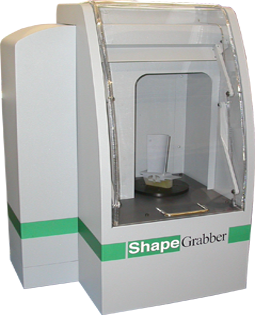 By Nick Chwalek, National Sales Manager, USA & Mexico
By Nick Chwalek, National Sales Manager, USA & Mexico
As someone who’s used almost every variety of scanner on the market, including structured light, LIDAR, CT, portable, and automated 3D scanners, I’ve noticed some similarities – and shortcomings – when it comes to industrial scanners.
“Automated” Doesn’t Always Mean What You Think It Does
The degree of automation varies dramatically between scanners and vendors. Most people assume that “automated” means that the machine will not require manual intervention, but this isn’t always the case. Some systems require weeks of training and the creation of special software code before they can be used on a project. These scanners are only “automated” after you’ve invested many hours of custom setup time. When evaluating a scanner, it’s important to get a complete understanding of how truly automated (or not) the scanner will be.
Because ShapeGrabber’s automated 3D scanners are specifically designed for industrial manufacturing environments, ease-of-use is one of their key features. After only a day or two of training, an operator can quickly set scan parameters for an inspection project. Once that setup is complete, nearly any user can place a part on the scan table and simply press a button to scan the part. And, best of all, you don’t need to write a new software program for each inspection project. This makes ShapeGrabber’s automated scanners very accessible and easy to use when compared with others on the market.
The “Swiss Army Knife” Approach Can Let You Down
To make the most of their 3D scanner investment, many users look for a scanner that will be a jack-of-all-trades and cover as many potential scanning projects that they may have. In our experience, scanners that do too large a number of different tasks are not particularly good at any one of them. Many 3D scanners try to handle a wide variety of applications and end up sacrificing speed, accuracy, or quality in the process. In almost every case, a scanner designed for your most common or important task will prove to be more effective – and easier to use – than an all-in-one machine.
ShapeGrabber 3D scanners, for example, are designed to be the best at quickly handling complex shapes. Curves and multiple features aren’t a problem for 
ShapeGrabber scanners. They easily scan the complex surface dimensions of parts and tools that would otherwise be too time-consuming, costly, or simply impossible to measure. By design, ShapeGrabber scanners bring speed, accuracy, ease-of-use, and complete coverage to industrial 3D measurement and inspection.
Not all 3D Scanners Last
Some 3D scanners are fragile scientific instruments that can only be operated by experts. Others are sturdier, yet only remain in good working order for 3-5 years. In addition to being accurate and easy to use, ShapeGrabber 3D scanners are robust and designed for use by multiple individuals. They are hardened products designed for industrial use.
In fact, many of our customers have been using their original ShapeGrabber scanners for a decade and more! By regularly updating your ShapeGrabber and applications software, and occasionally upgrading to newer scanheads, a ShapeGrabber scanner will function at a high level for a decade – and likely more.
The ShapeGrabber Scanning Experience
At ShapeGrabber, we’ve been pioneering industrial 3D scanners for more than 20 years. That’s why our industrial 3D scanners enable the next generation of quality control for tough measurement and inspection problems. Whether you’re investigating your first 3D scanner or are looking to augment your existing 3D scanning capabilities, contact us to learn how we can provide you with an automated, accurate and easy to use 3D scanner that will stand the test of time!
